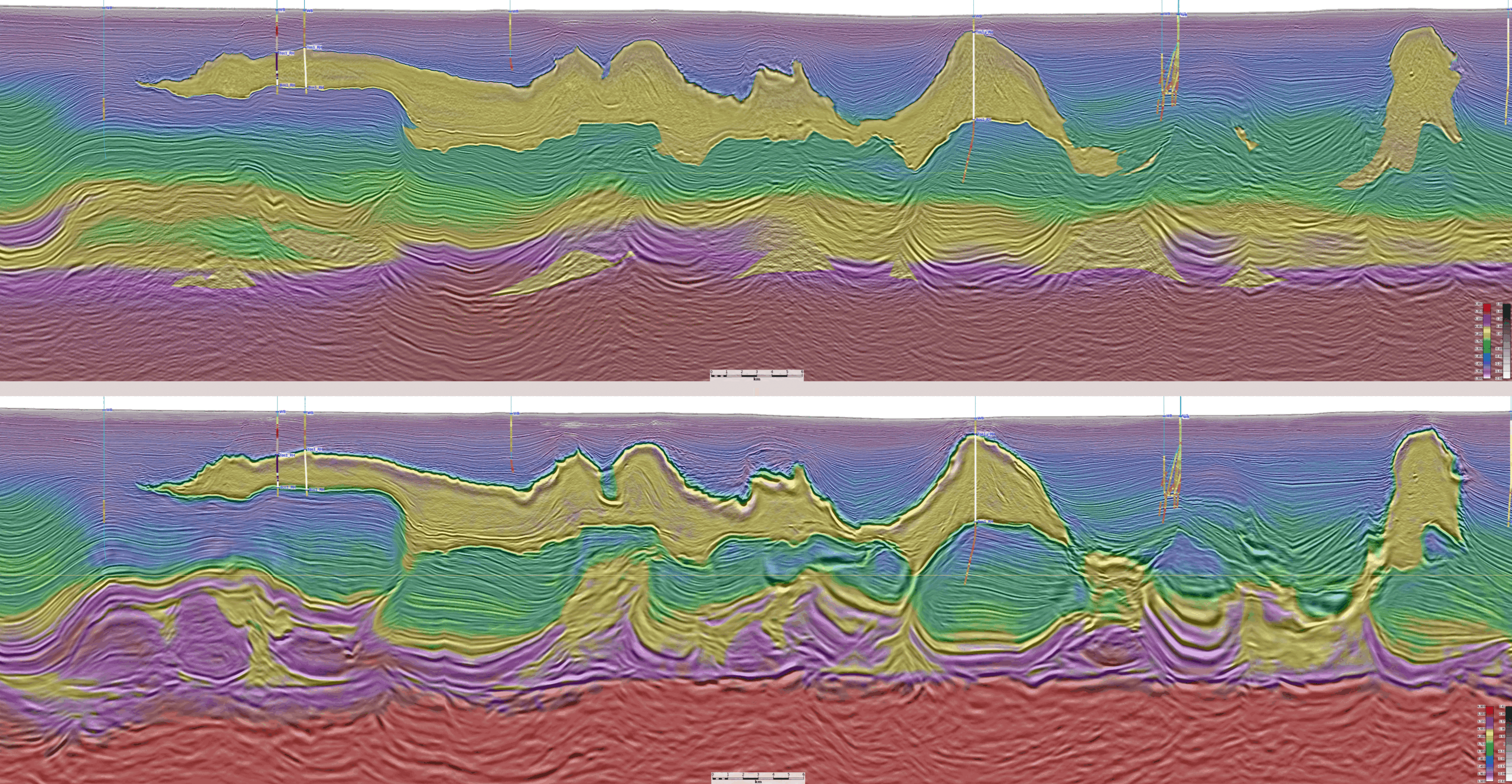Finding treasures beneath the waves: The role of advanced seismic technologies in the Gulf of Mexico
The Gulf Of Mexico (GOM) has long been a cornerstone of America’s energy landscape, providing significant oil and gas reserves. As exploration ventures into increasingly challenging areas, the need for advanced seismic technologies has never been greater. The long-offset Ocean Bottom Node (OBN) technology, introduced to the multiclient data market in 2019, has become a transformative tool in exploration and development, offering unmatched imaging accuracy and clarity. With the GOM contributing over 15 % of the United States oil production, the adoption of innovative seismic technologies like long-offset OBN will be the key to unlocking billions of dollars in untapped energy reserves.

The power of long-offset OBN
The Amendment 2 survey (Figure 2) in the Mississippi Canyon protraction area exemplifies the transformative potential of long-offset OBN technology. This dataset, co-produced by TGS and SLB, provides a significant uplift in imaging quality (Figure 1), allowing for the identification of new prospects with greater confidence. This advanced technology is crucial for de-risking drilling activities, especially in mature basins like the GOM, where the presence of extensive salt structures poses significant challenges to subsurface imaging.
Seismic data insights: Amendment 2 survey
The Amendment 2 survey data has been instrumental in guiding recent exploration efforts. For instance, during the US Gulf Lease Sale 259, companies utilized a Fast Track product derived from this high-quality seismic data to make informed bidding decisions. This underscores the critical role of accurate subsurface models in minimizing drilling risks and costs. As the industry anticipates the next bidding round in 2025, companies equipped with long-offset OBN multiclient data will be better positioned to secure the most promising exploration blocks.
The role of low-frequency source technology
As exploration moves toward the more geologically complex Western GOM, continuous innovation in OBN technology becomes imperative. The adoption of low-frequency source technology, such as Gemini and TPS, represents a significant advancement in seismic acquisition and imaging. The industry must embrace and integrate low-frequency source technology to maximize the value derived from long-offset OBN data.
Low-frequency sources can penetrate deeper into the earth and provide more recorded low-frequency energy compared to a conventional source. This capability is particularly valuable in areas like the Western GOM, where the extreme complexity of the subsurface creates a higher uncertainty of input models for Full Waveform Inversion (FWI). Recording lower frequencies can help FWI to converge to a true model faster and reduce the risk of using a less accurate input. By integrating low-frequency source technology into future long-offset OBN surveys, the industry can achieve even greater precision in subsurface imaging, further reducing exploration risks and costs.

Elastic FWI: a leap forward in imaging quality
Another key innovation in seismic data processing is the use of Elastic Full Waveform Inversion (Elastic FWI). Unlike Acoustic FWI, which only considers compressional waves, Elastic FWI takes into account both compressional and shear waves, providing a more comprehensive and accurate subsurface model. This is especially advantageous when used on OBN data, as it can reveal subtle geological features, particularly around salt structures (Figure 3).
Elastic FWI has the potential to revolutionize seismic imaging, offering detailed insights into rock properties and fluid content. As TGS and other industry leaders continue to refine and deploy this technology, the ability to make informed exploration and production decisions will be significantly enhanced.
Looking ahead: the role of innovation in gulf exploration
As the energy industry evolves, the need for innovative technologies like long-offset OBN and Elastic FWI becomes increasingly critical. These advancements not only enhance our ability to discover and develop new resources but also play a crucial role in ensuring the GOM’s continued contribution to America’s energy security and economic prosperity. The recent advancements in seismic technology reflect a broader trend of continuous innovation in the industry, paving the way for new exploration opportunities, particularly in the Western GOM, where traditional streamer data often fails to provide high-quality subsalt images.
Looking forward, the continued refinement and deployment of these technologies will be essential in unlocking the full potential of the GOM. The industry’s commitment to innovation will not only help meet the BOEM’s ambitious production forecasts but also ensure that the echoes of discovery in the Gulf continue to resonate for years to come.
The US GOM remains a critical hub for oil and gas exploration, and technologies like long-offset OBN and Elastic FWI are at the forefront of this effort. As the energy industry navigates the challenges and opportunities of the 21st century, these innovations will be key to unlocking remaining resources and driving sustainable growth. The future of exploration in the Gulf is bright, and with continued investment in cutting-edge seismic technologies, we are poised to discover even greater treasures beneath the waves.




